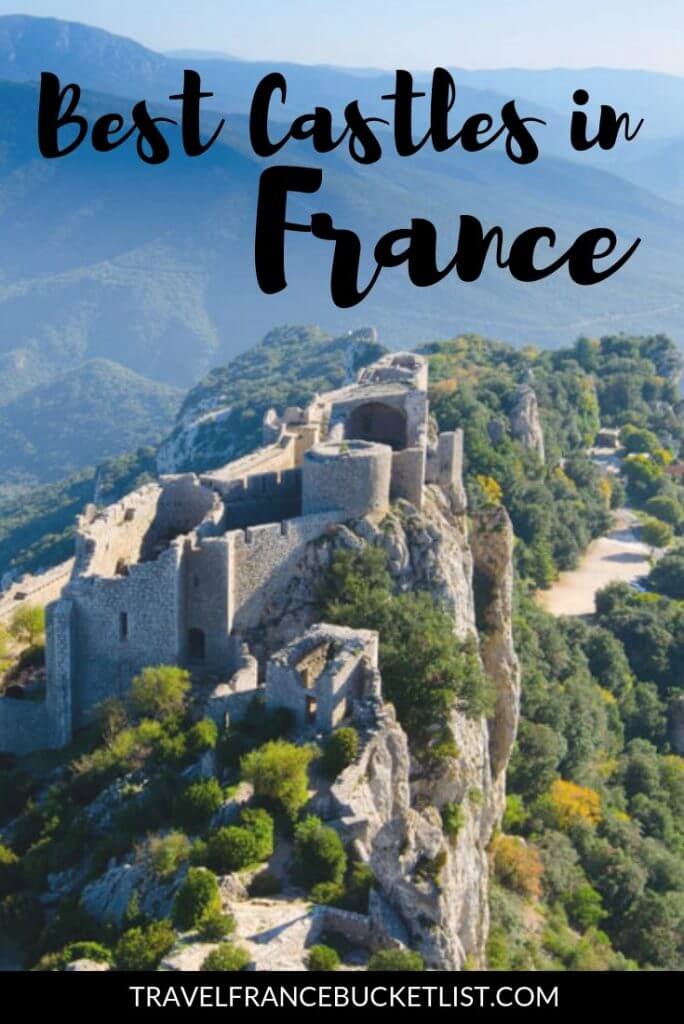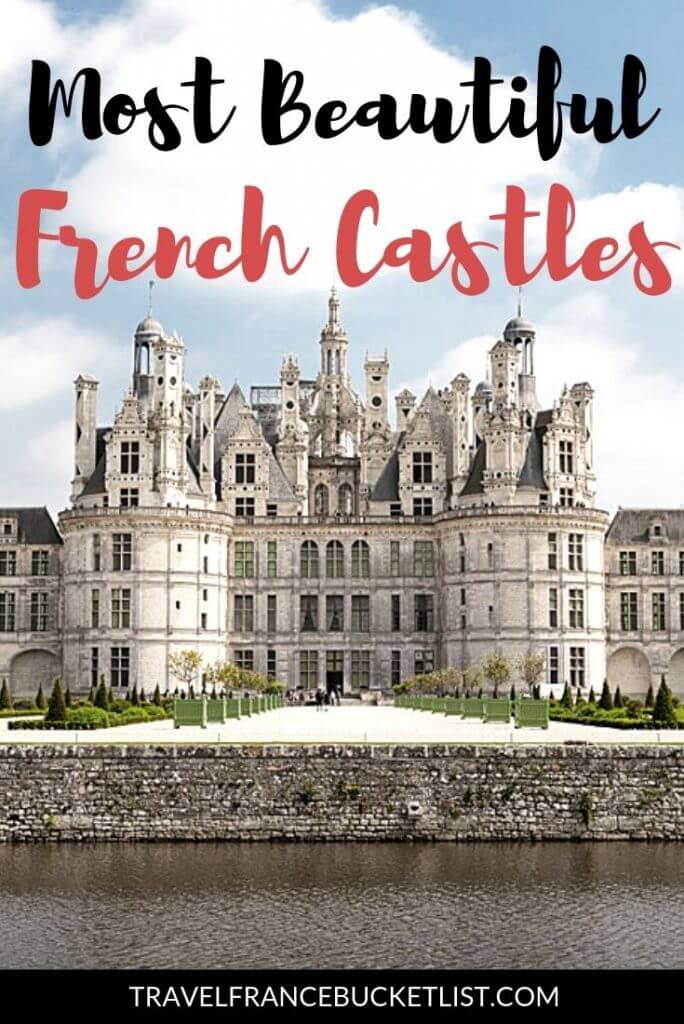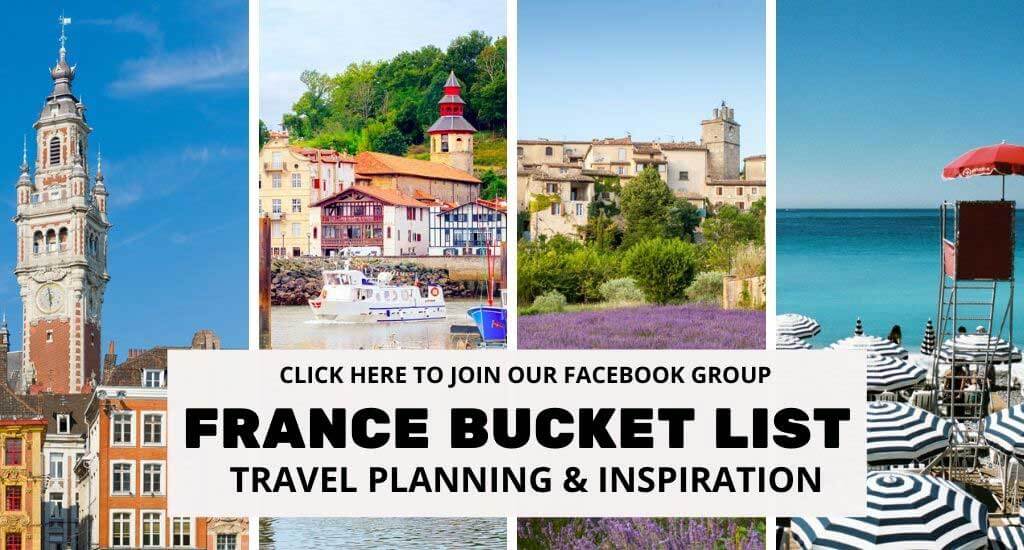Article written by Elisa - Travel Writer & Local in France
This article may contain compensated links. Please read disclaimer for more info.
Beautiful Castles in France
Are you looking for beautiful châteaux to visit in France? In France, there are stunning châteaux everywhere, and there’s something for every taste, from medieval castles to Renaissance châteaux surrounded by manicured gardens.
We have rounded up the list of the best châteaux in France, including famous châteaux in France and hidden gems worth exploring. In this list, we have tried to cover all the French regions and different architectural styles. Because ruins can be just as beautiful as flawless palaces, the list also includes a couple of crumbling castles.
Here’s the list of best castles in France in no particular order, with a map to help you pinpoint all these fabulous French castles.
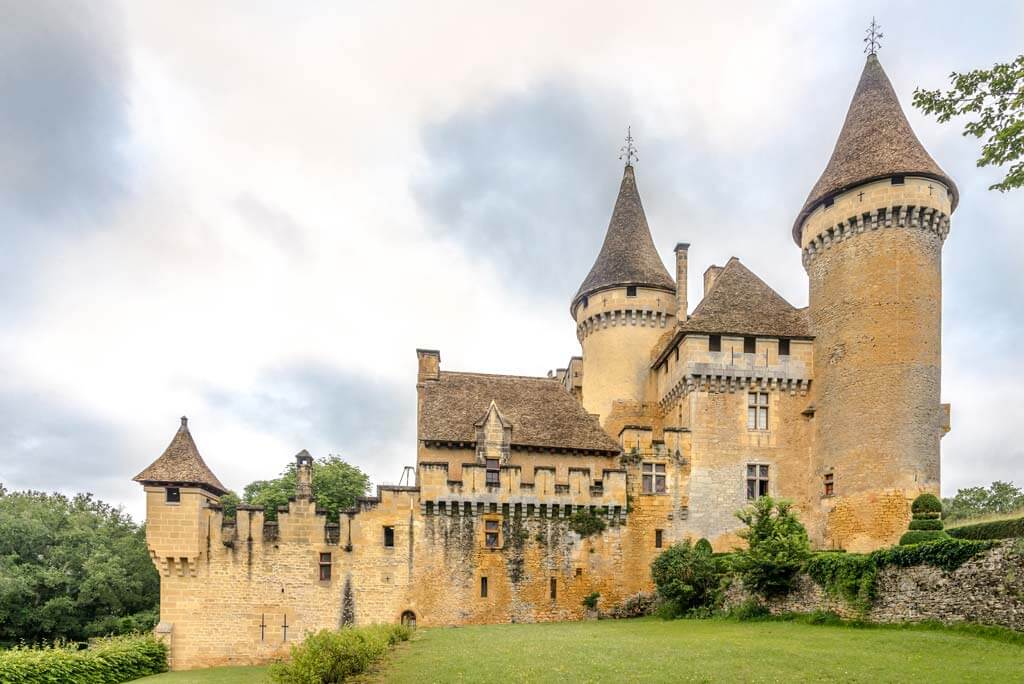
READ MORE: What is a château?
Châteaux to Visit in France Map
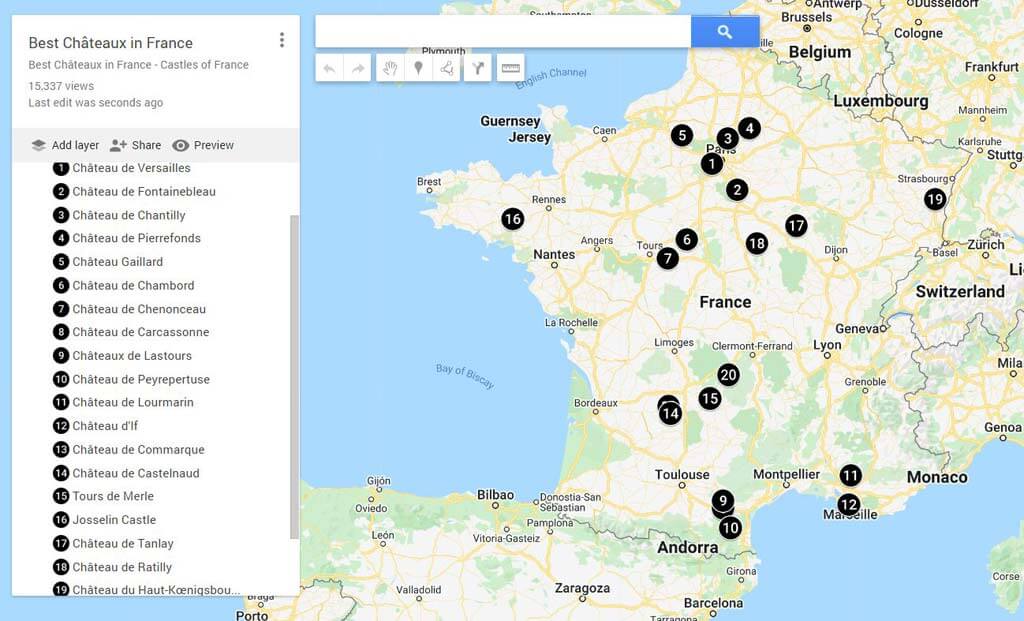
Click here to view the map of the French castles online on Google
How to Visit the French Châteaux
With a few exceptions (Versailles, Fontainebleau,…), the best way to visit these beautiful castles in France is by car. A French self-drive holiday allows you to visit all these stunning French châteaux, usually difficult to reach by public transportation.
If you don’t have a car in France, we recommend booking one with Discover Cars. This site is great because it takes all major rental companies, such as Hertz, Avis, and more, and compares prices for you. If this is your first time driving in France, check out our best tips for renting a car in France.
Stay in one of the Château-Hotels in France
For a total château experience, stay a couple of nights in one of the wonderful château-hotels in France. Some lovely French castles have found new lives as château-hotels and now offer accommodation with discerning five-star service that will treat you like a royal, if only just for the night. Explore the best châteaux in France during the day, and choose your particular château to rest your head at night.
Here are some great places to stay:
Best Châteaux in France near Paris
There are many castles near Paris, and they all make great day trips from the French capital. Most of these castles are Royal Castles, but there are also other lesser-known French châteaux interesting to visit.
If you are looking for castles near Paris, here’s the list of the most beautiful ones.
Château de Versailles
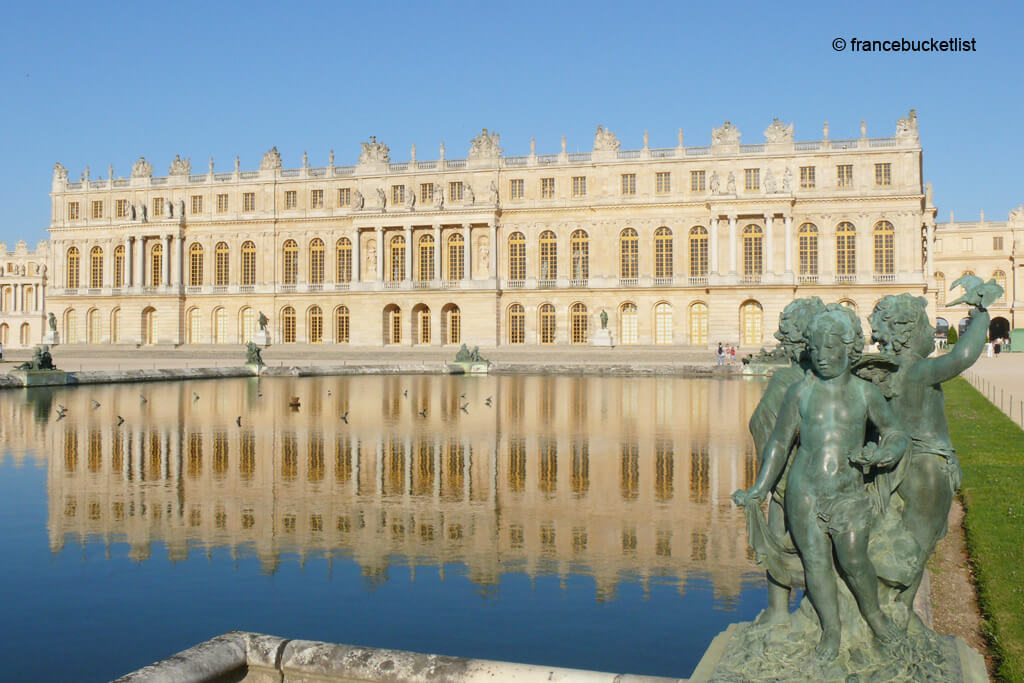
- Location: Versailles (Ile-de-France)
- Architectural Style: French Baroque
Château de Versailles is for some the best château in France, a jewel of French baroque architecture listed as UNESCO World Heritage. Due to its proximity to Paris, it is also one of the most visited castles in France.
Versailles was built in the 17th century by King Louis XIII as a hunting lodge. Under his son, King Louis XIV, the palace was totally rebuilt by the best artists of that time: Le Vau was in charge of the architecture, Le Nôtre designed the gardens, and Le Brun was in charge of the sculpture – Click here to buy tickets to Château de Versailles
After the visit to the palace, don’t miss the Gardens of Versailles, stunning French-style gardens decorated with beautiful sculptures, fountains, and other water games that surround the famous French château on three sides. From April to the end of October, the Gardens of Versailles host beautiful water and music shows.
READ MORE: check out this quick guide to Versailles
Château de Fontainebleau
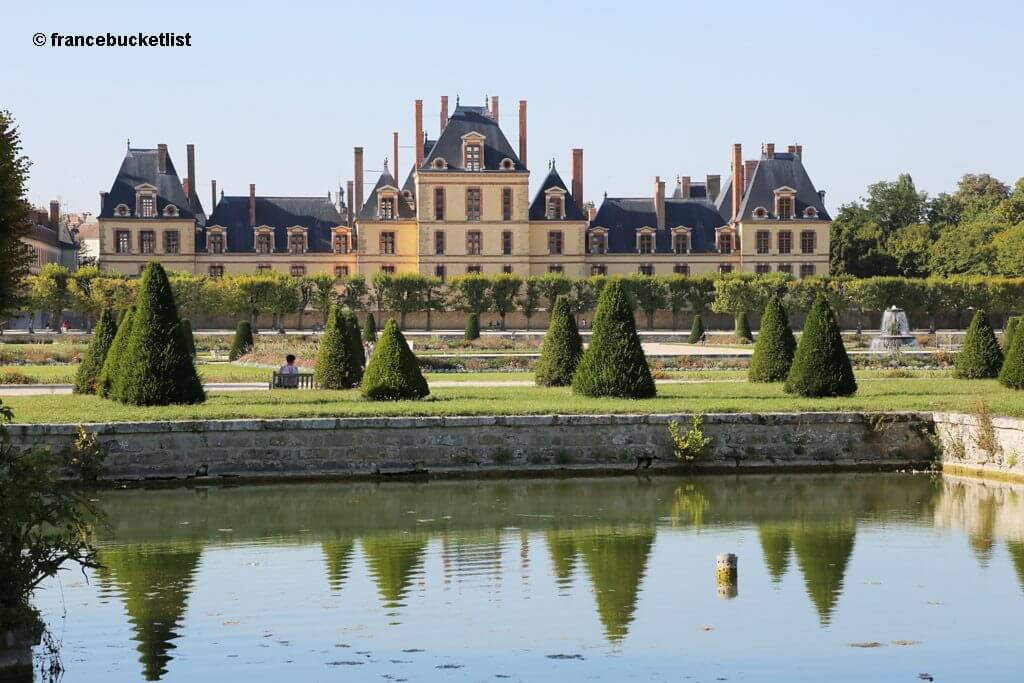
- Location: Fontainebleau (Ile-de-France)
- Architectural Style: different styles
TIP: This day top-rated tour from Paris visits Château de Fontainebleau and Château de Vaux-le-Vicomte in one day
Château de Fontainebleau is another famous château in France. Château de Fontainebleau was the French Kings’ home during their hunting getaways in the forest of Fontainebleau.
Since the Middle Ages, the forest of Fontainebleau was a hunting place for the royals and nobles. King Louis VII was the first king to build a castle (a keep) in Fontainebleau in the 12th century. Since then, his successors enlarged and embellished this former keep, turning it into one of the most beautiful castles in France.
Château de Fontainebleau has fantastic rooms and halls richly decorated with the best materials and fabrics. The exquisite Renaissance Rooms, decorated in the 1500s under King François I and King Henry II’s supervision, are worth the entry alone. Finally, don’t miss the surrounding gardens with beautiful fountains and ponds – Click here to buy tickets to Château de Fontainebleau
Château de Chantilly
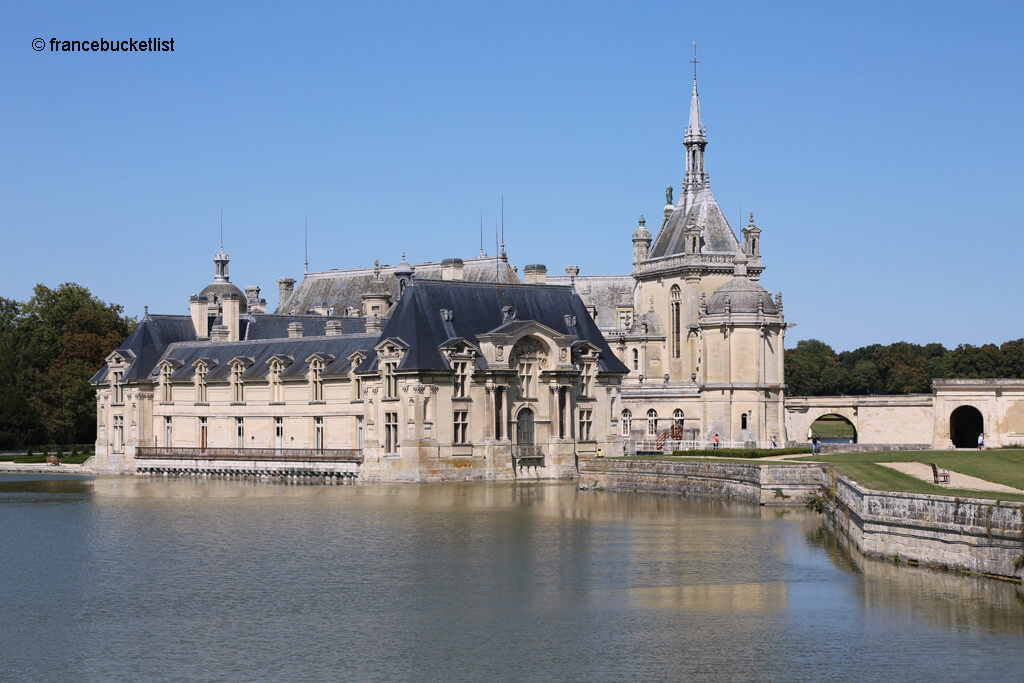
- Location: Chantilly (Hauts-de-France)
- Architectural Style: Renaissance
Château de Chantilly is not a royal castle, but its picturesque setting, gardens, and architecture will likely steal your heart. Besides, Chantilly is well connected to Paris by train, making a beautiful day trip out of Paris.
The current castle was rebuilt after the French Revolution by Henry d’Orléans, penultimate son of King Louis-Philippe I and the estate’s heir. Henry d’Orléans installed in the château his collections of paintings, drawings, and old books, known today as the Musée Condé. The Musée Condé hosts the second most extensive collection of artwork in France, only second to the Louvre artwork in Paris. There’s also an impressive library and lecture room with an extensive collection of medieval manuscripts and ancient books.
After visiting the château, explore the magnificent gardens. The château is surrounded by a beautiful French Garden designed by André Le Nôtre an English Garden, and a hamlet similar to the one in Versailles – Click here to buy tickets to Château de Chantilly
Best Castles in Northern France
The list of castles in Northern France includes beautiful French châteaux in the regions of Ile-de-France, Normandy, and Hauts-de France.
Château de Pierrefonds
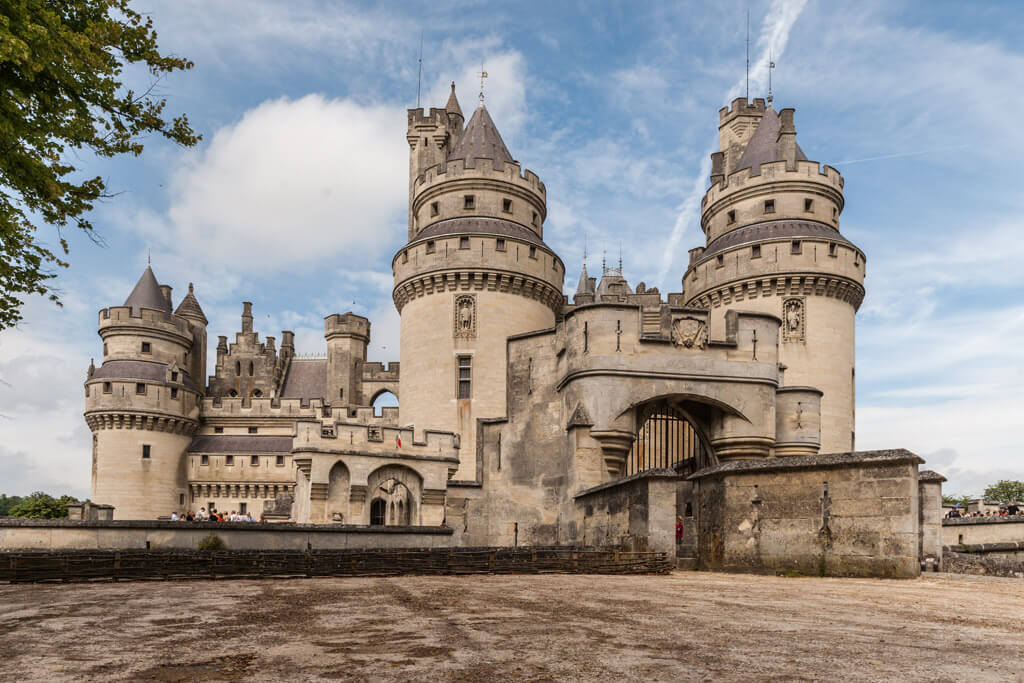
- Location: Pierrefonds (Hauts-de-France)
- Architectural Style: Late Medieval /Early Renaissance
TIP: This road trip from Paris explores Château de Pierrefonds and other beautiful sites nearby.
Château de Pierrefonds is a fairy-tale château in France with an interesting history. Located in the village of Pierrefonds, north of Paris, Château de Pierrefonds makes an excellent day trip from Paris by car, and it is a great place to explore with the family.
The first construction was built during the 13th century. One century later, King Philippe Auguste incorporated the castle into the royal domains to be used as a royal palace. When King Charles V died in 1392, Château de Pierrefonds was inherited by his youngest son, Duke Louis d’Orléans, who entirely rebuilt the castle.
Over the centuries, the castle changed hands many times. In March 1617, during the early troubled days of King Louis XIII’s reign, the castle, then the property of François-Annibal d’Estrées, who joined the ‘parti des mécontents’ (party of discontent), was besieged, taken, and destroyed by the King’s troops.
Two centuries later, the ruined castle was bought by Napoleon I, and it was used for important banquets and other events. In 1857, Emperor Napoleon III asked Viollet-Le-Duc to undertake the restoration of the château to be used as an imperial residence. The result was more a work product of Viollet-le-Duc’s imagination rather than a faithful restoration but we love the interiors with their bright colors and period furniture – Click here to buy tickets to Château de Pierrefonds
Château Gaillard
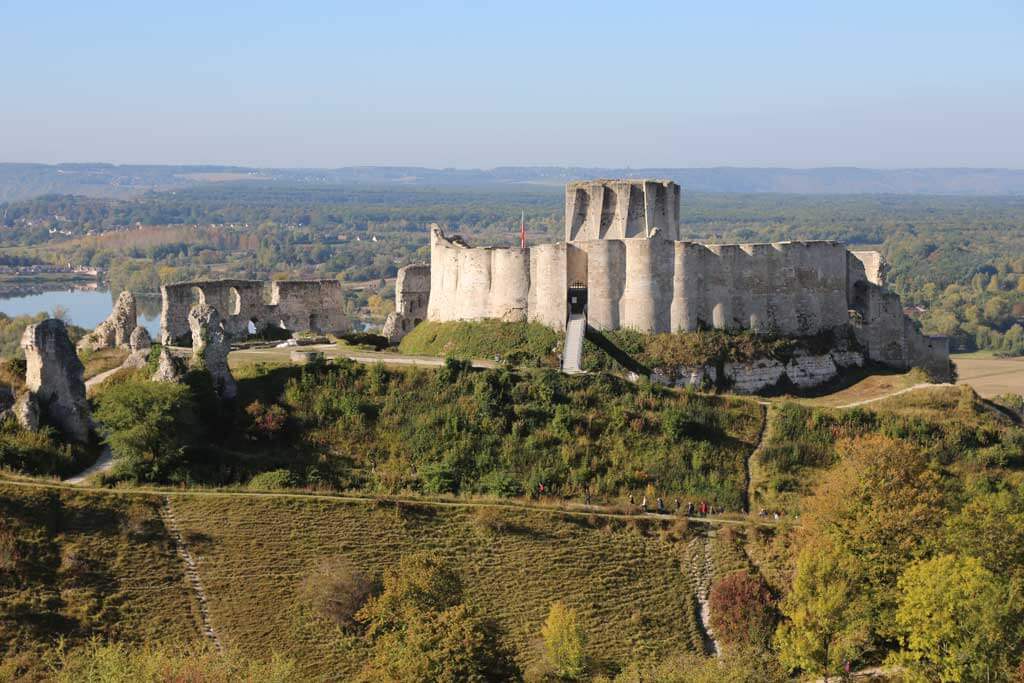
- Location: Les Andelys (Normandy)
- Architectural Style: Medieval
TIP: This Normandy road trip from Paris explores Château Gaillard and other beautiful places nearby.
Château Gaillard is one of the best castles in Normandy. It is a medieval fortress built in the 12th century under the rule of King Richard the Lionheart, who was also Duke of Normandy, to protect his lands against the French King Philippe Auguste. The castle was strategically located on the top of a high cliff dominating the towns of Les Andelys and the Seine Valley. The view from the castle, over Les Andelys and the Seine’s meanders, is amazing.
Château-Gaillard had a complex plan, very different from other fortresses built during the same period. The castle was organized in multiple volumes, almost independent of each other. This arrangement aimed to multiply the obstacles to exhaust the attacker and need fewer defenders.
Château Gaillard consisted of three baileys (an inner, a middle, and an outer), the latest with the castle’s main entrance. In the inner bailey, the keep is one of the most original and best-preserved keeps in the area. It is in the form of a circular tower on three quarters but with an angle to the southeast. The baileys, which were separated by rock-cut ditches, housed the castle’s stables, workshops, and storage facilities, while the keep was reserved for the use of King Richard.
Loire Valley Castles
The Châteaux in the Loire Valley are some of the most famous châteaux in France. And for a reason! Fairy-tale architectures, unique settings, and interesting stories. The Loire Valley Castles are located in the regions of Centre – Val de Loire (the most popular) and Pays de la Loire.
The Loire Valley Castles are not far from the French capital, so it is possible to explore one or two castles on a busy day trip from Paris. Here’s the list with a couple of favorites.
Château de Chambord
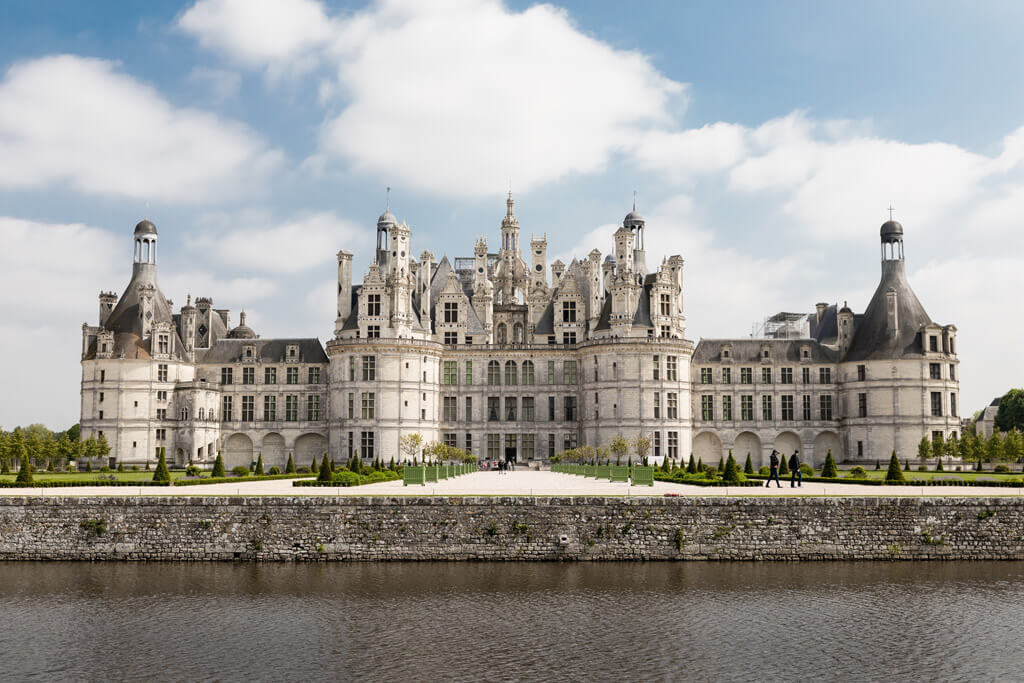
- Location: Chambord (Centre-Val-de-Loire)
- Architectural Style: Renaissance
TIP: This Loire Valley road trip explores Château de Chambord and other beautiful Loire Valley Castles nearby.
Château de Chambord is the best French château in the Loire Valley and definitely a must on any Loire Valley bucket list. It is also the largest castle in the area, surrounded by the largest closed forest park in Europe (approximately 50 km2 surrounded by a wall of 32 km long).
Château de Chambord was built in the 1500s for King Francis I to be used as a second residence. For the King, Château de Chambord was a place to relax, hunt, and have fun with his court, but it was also used to showcase his political and cultural power.
From the beginning of the Second World War, the castle became the center to sort and protect the treasures of the national museums of Paris and the North of France, which had to be evacuated from German bombardments. Curators and guardians stood guard to defend the works of the Louvre Museum stored in the castle.
Don’t miss Chambord’s famous double-helix staircase that twists gracefully up three floors: it is rumored that Leonardo da Vinci had a hand in its design! – Click here to buy your tickets to Château de Chambord
Château de Chenonceau
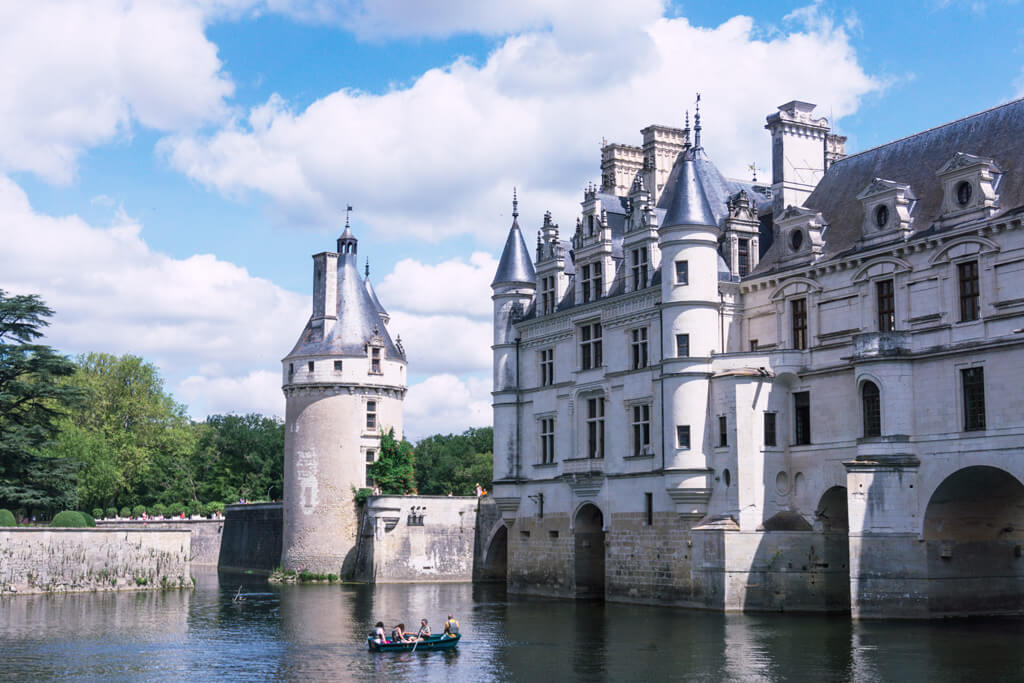
- Location: Chenonceau (Centre-Val-de-Loire)
- Architectural Style: Renaissance
TIP: this top rated Loire Valley day tour from Paris visits Château de Chenonceau, Château de Chambord, and Château d’Amboise
Château de Chenonceau is another famous French château in the Loire Valley, with beautiful architecture and a unique setting. For many, Chenonceau is considered the best château in France and is the second most visited castle in the country only after Versailles.
The construction and later transformations of this Renaissance château are closely linked to several powerful women. It was built by Katherine Briçonnet in 1513, enriched by Diane de Poitiers (King Henry II’s mistress who received the château from the King), and enlarged under Queen Cathérine de Médicis. For this reason, Château de Chenonceau is also known as Le Château des Dames.
Chenonceau’s main highlight, which makes the castle unique, is its famous two-story gallery overlooking the Cher River. But of course, there’s much more to explore in Chenonceau! You can also visit the castle’s surroundings on a rowboat or fly over Chenonceau in a hot air balloon – Click here to buy your tickets to Château de Chenonceau
Best Castles in Southern France
The list of best castles in Southern France includes beautiful castles in the regions of Occitanie and Provence-Alpes-Côte d’Azur.
The first three castles below are must sites of the Cathar Country. Catharism was a religion that flourished in the Languedoc-Roussillon region during the 12th and 13th centuries considered heretics by the Catholic Church.
Castle of Carcassonne
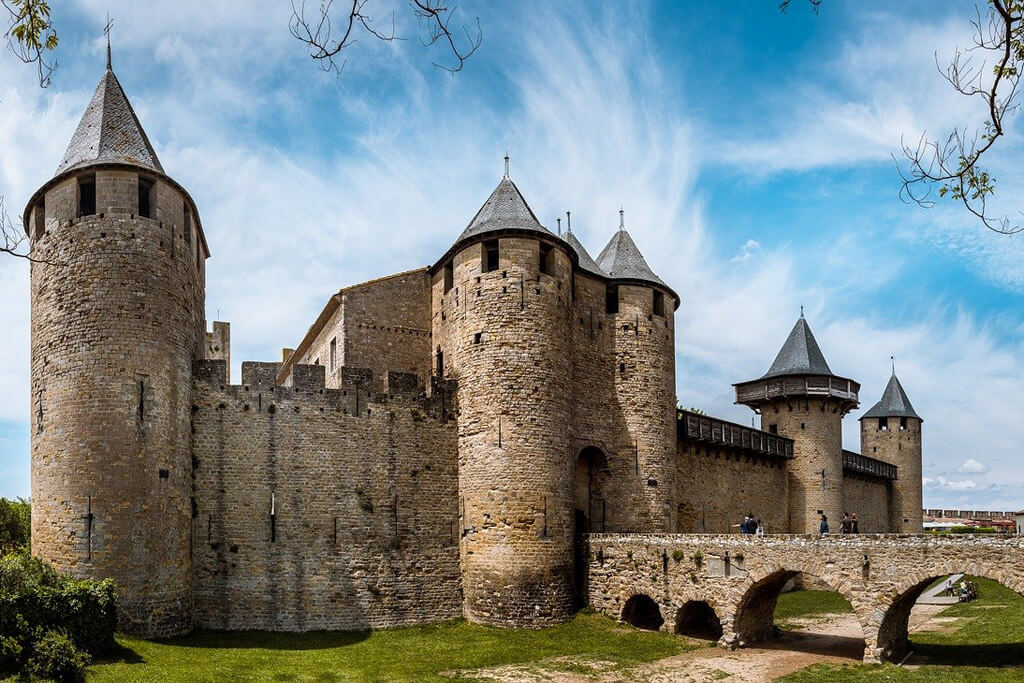
- Location: Carcassonne (Occitanie)
- Architectural Style: Medieval
The Castle of Carcassonne is a medieval castle within the Cité de Carcassonne, a kind of fortress inside the fortress and the epitome of your fairytale medieval castle. The Castle at Carcassonne was built in the 12th century by Bernard Aton Trencavel, Count of Carcassonne, over the western part of previous Roman walls.
The Castle of Carcassonne is rectangular in shape, and it is separated from the city by a deep moat and defended by two barbicans. The castle’s six towers are pierced with stirrup loopholes, and the curtain walls and the top of the towers can be used with hoists. The western flank of the walls, against which the Carcassonne Castle is built, is defended by a square watchtower, the Tour Pinte, which is the highest in the city.
Inside the Carcassonne Castle, there are the remains of the Counts’ private chapel and a museum with an interesting collection of Cathar gravestones and other objects related to the Cathars – Click here to buy your tickets for the Cité de Carcassonne and Castle
Châteaux de Lastours
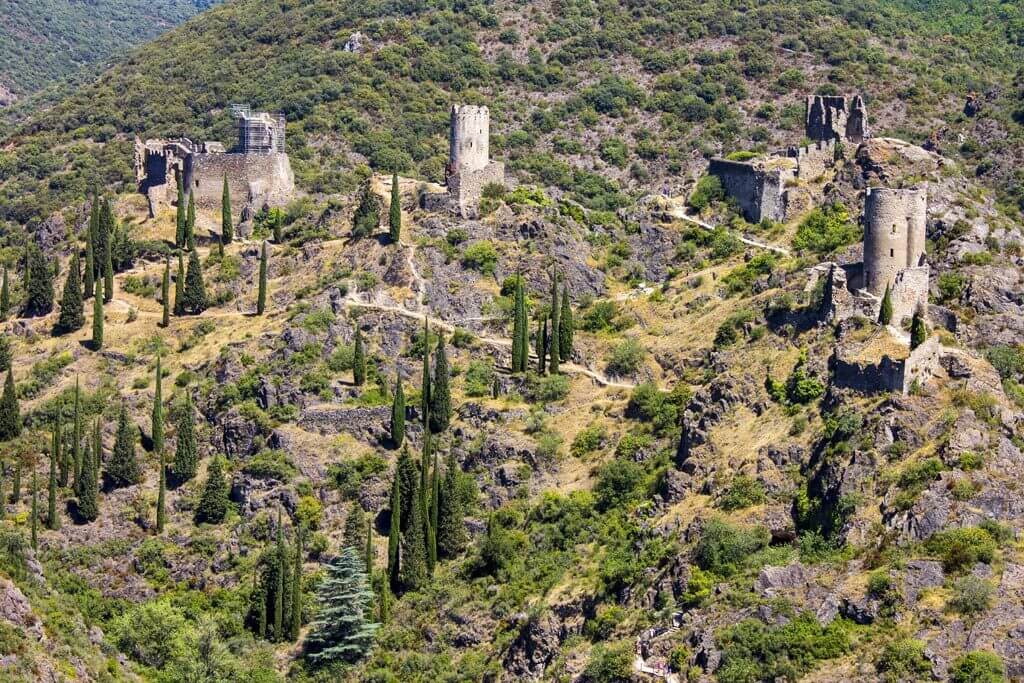
- Location: Lastours (Occitanie)
- Architectural Style: Medieval
TIP: This Cathar Country road trip explores Châteaux de Lastours and other beautiful castles nearby.
Châteaux de Lastours is an ensemble of four castles (Cabaret, Tour Régine, Surdespine, and Quertinheux) perched on a rocky spur and isolated by deep valleys. They are located in the Languedoc-Roussillon region, a 20-minute ride from the famous fortified city of Carcassone. At the foot of the castles, visitors can still see the ruins of Cabaret, the village that surrounded the castles in Medieval times.
In the 11th century, there were only three castles (Cabaret, Surdespine, and Quertinheux) occupied by the Lords of Cabaret. Their location evolved in time following the successive destructions and reconstructions.
The Lords of Cabaret seemed to be very close to the Catharism, and there was a regular presence of Cathar bishops in the castles. Cabaret was besieged by the Crusaders in 1209 and 1227 without success.
Cabaret was besieged again in 1229, and the Lords of Cabaret capitulated definitely. Cabaret became a royal fortress, and a fourth tower, the Tour Régine, was built by order of the king to affirm his supremacy over Cabaret.
What visitors can see today are the remains of the 13th-century buildings, with fantastic views over the surrounding valleys.
Château de Peyrepertuse
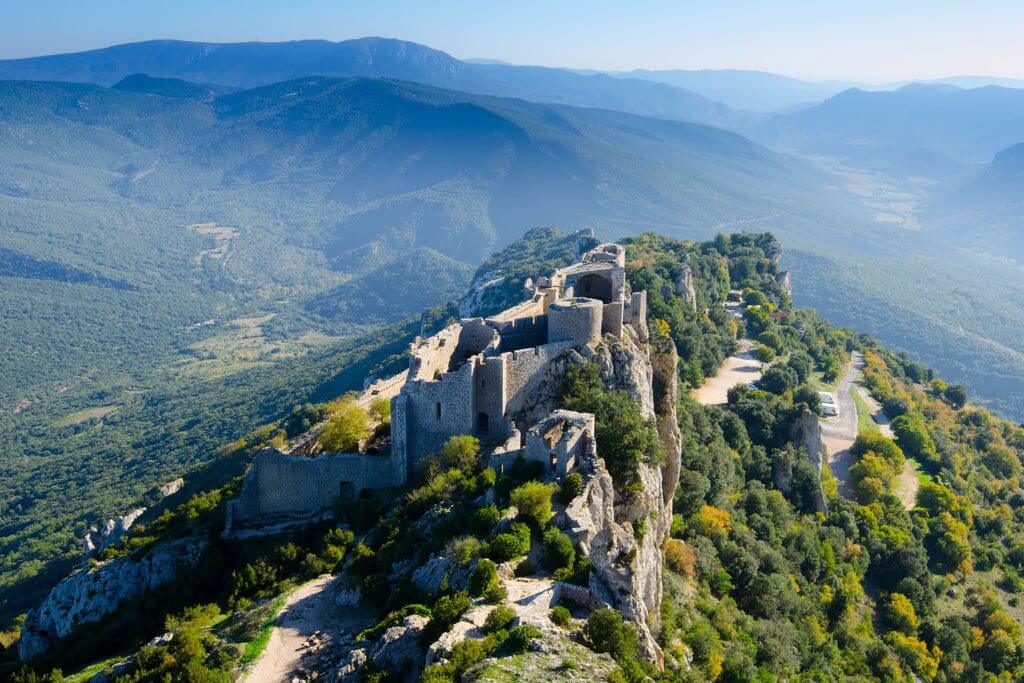
- Location: Duilhac-sous-Peyrepertuse (Occitanie)
- Architectural Style: Medieval
This vertiginous citadel is a fantastic piece of military architecture built on a limestone cliff watching over the village of Duilhac.
Built between the 11th and 13th centuries, the Château de Peyrepertuse first consisted of a small fortified settlement which, over the years, turned into an essential piece of Aragon’s defensive line against the Occitan lords.
During the crusade against the Albigenses, the castle was the stronghold of Guillaume de Peyrepertuse, who, not wanting to submit, was excommunicated in 1224. Guillaume finally surrendered after the fall of Carcassonne, and the castle became a French possession in 1240. The French King Louis IX turned Château de Peyrepertuse into a crucial part of his defense line against Aragon.
In 1242, King Louis IX decided to strengthen the castle and add a second part, the Donjon Sant Jordi (Saint Jordi’s Keep), located higher up on the crest. Château de Peyrepertuse’s strategic importance ended with the Pyrénées Treaty in 1659, when the northern part of Catalonia was transferred to France. However, men continued watching over this beautiful castle until the French Revolution.
Today visitors can explore the lower walls, the two keeps linked by a staircase dug out of the rock and two small chapels. The view from Saint Jordi’s Keep, the castle’s highest point, is incredible.
Château de Lourmarin
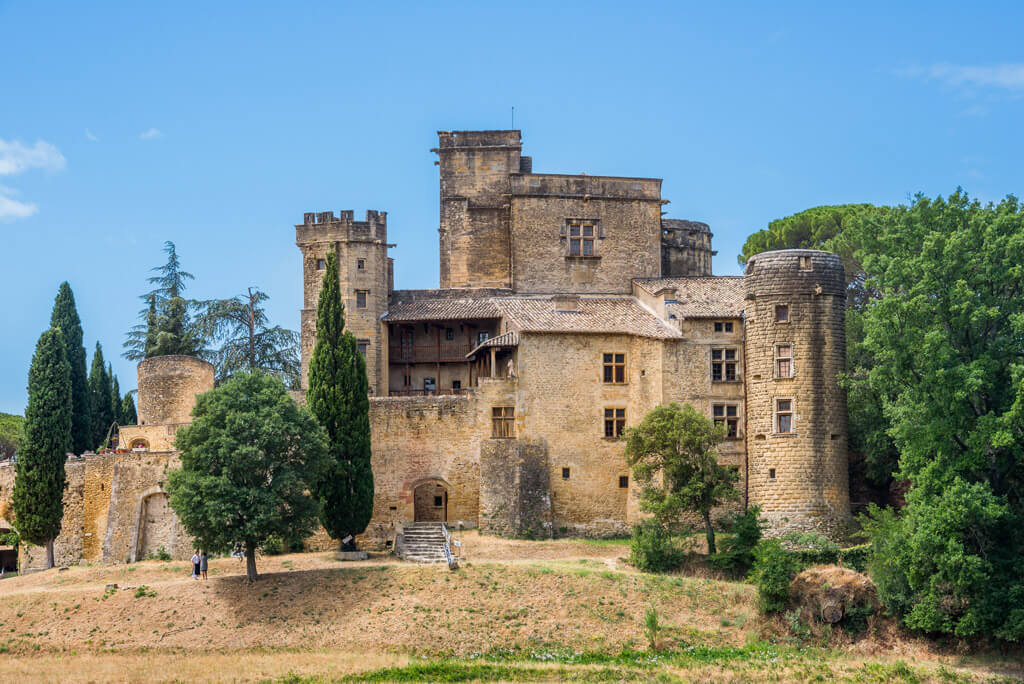
- Location: Lourmarin (Provence-Alpes-Côte d’Azur)
- Architectural Style: Renaissance
Château de Lourmarin, in the Vaucluse department, is a Renaissance château built in two phases. The first part was built in the 15th century, on the ruins of a fortress dating from the 12th century, and the second part of the castle was built during the first half of the 16th century.
The Château de Lourmarin is nicknamed the little Villa Medici in Provence, mainly for its ceremonial spiral staircase, loggia, fireplaces, and parkland. It also has beautiful furniture and an interesting collection of musical instruments and engravings.
Château d’If
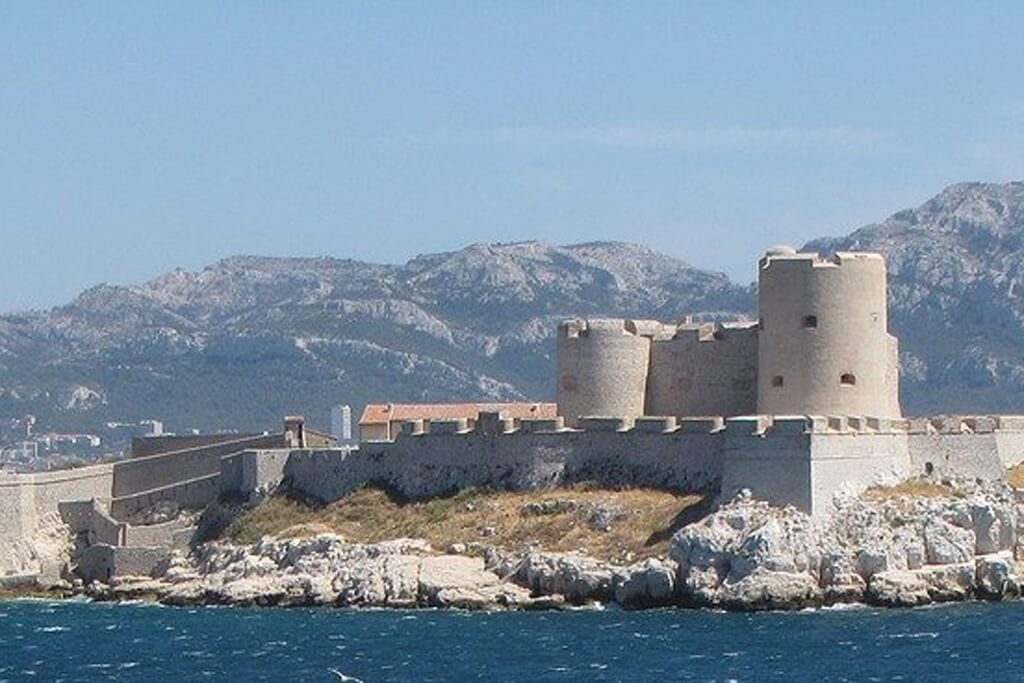
- Location: If Island, Marseille (Provence-Alpes-Côte d’Azur)
- Architectural Style: Renaissance
The imposing Château d’If was built by King François I in 1524 to protect the city of Marseille from sea attacks. This fortified château is located on the small If Island, off Marseille’s coast. During its 400 years of activity, this French château was used primarily as a state prison.
Château d’If became world-famous thanks to the novel Le Comte de Monte-Cristo by Alexandre Dumas. Here, the hero Edmond Dantès was imprisoned for 14 years.
Today, Château d’If is one of the most popular day trips from Marseille, attracting thousands of visitors every year. Numerous shuttle boats link Marseille’s Old Port to Ile d’If hourly, and the guided visit to the château is very interesting – Click here to buy your tickets to Château d’If
Best Castles in Western France
The list of castles in Western France includes some Dordogne Castles and other French châteaux in the regions of Brittany, Pays-de-la-Loire, and Nouvelle-Aquitaine.
Château de Commarque
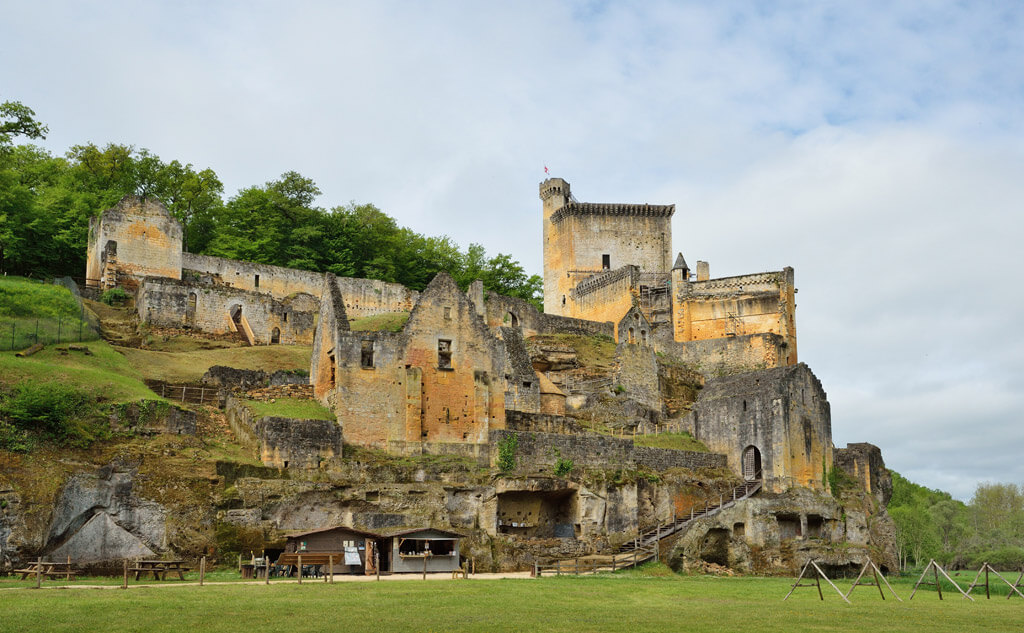
- Location: Eyzies-de-Tayac-Sireuil (Nouvelle-Aquitaine)
- Architectural Style: Medieval
Château de Commarque, in the Dordogne Valley, is one of the most beautiful medieval castles in France. It is a medieval castrum that regroups a castle, a chapel, and some tower-houses for the nobility inside the fortification.
Château de Commarque was built during the 12th century by the Lords of Beynac to ensure the safety of two important trade routes that crossed the valley: the road from Périgueux to Cahors and the road from Brive to Bergerac.
During the Hundred Years’ War, the Beynacs remained the faithful defenders of the valley and the crown of France. The English nevertheless seized the castle in 1464 and kept it for a few years. Other wars followed, and with them, the castle was badly damaged. Finally, the site was abandoned in the 18th century.
In 1915 a religious man discovered a prehistoric cave inside the cliff that supports the castle. This cave contained 150 drawings carved by men 15,000 years ago. The cave was classified as a historical monument in 1924.
In 1968, a descendant of the original family bought the ruins of the castle and undertook an extensive program of consolidation and restoration of the castle. The castle is open to the public since the year 2000.
Château Castelnaud
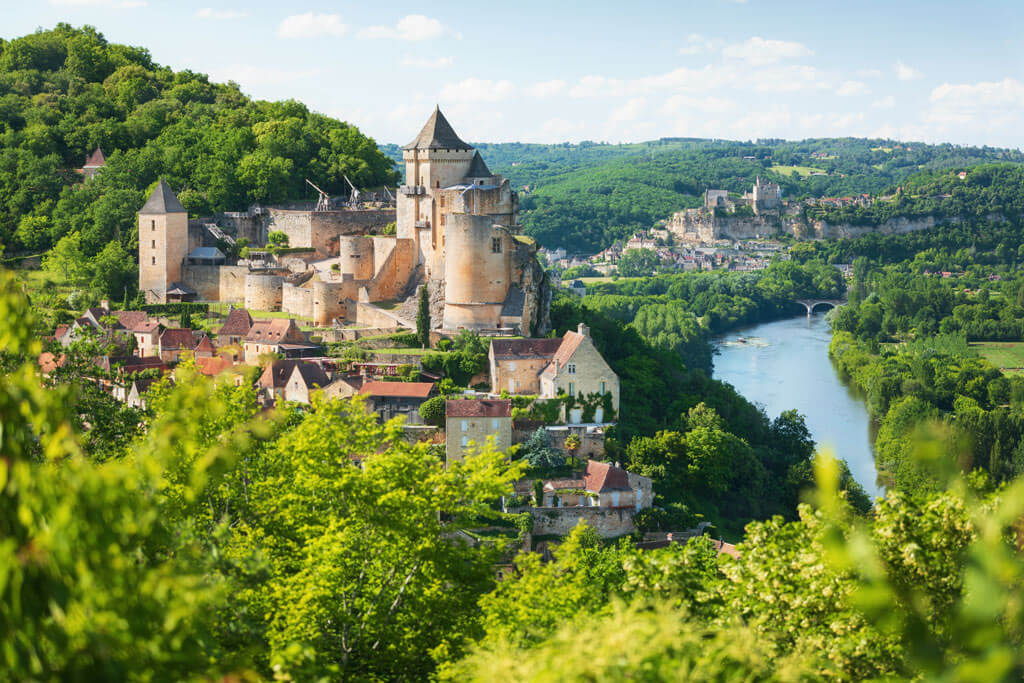
- Location: Castelnaud-la-Chapelle (Nouvelle-Aquitaine)
- Architectural Style: Medieval
This medieval castle is located in the Dordogne Valley, overlooking the Céou Valley and facing the fortress of Beynac, its eternal rival. Château Castelnaud is one of the most beautiful châteaux in France, an excellent example of a feudal private fortification, with fortified walls, a bastion, a dungeon, an artillery tower, and living quarters.
One of the most famous castles in Dordogne, the first construction was built during the 12th century but was destroyed during the Albigensian Crusade led by Simon de Monfort’s armies. During the 13th century, a new castle was built, and it was occupied by the families of Castelnaud and Berbiguières united by marriage.
During the Hundred Years’ War, Castelnaud took the English party until 1442, when the king’s army defeated it. As a result, the castle changed owners, and the family of Caumont kept it until the French Revolution when the castle was abandoned.
From 1967 to 2012, the castle underwent an extensive program of restoration works. Today, Château de Castelnaud is open to the public and it is an easy half-day trip from Sarlat. It hosts the interesting Museum of the War in the Middle Ages, with an extensive collection of weapons and other items.
Tours de Merle
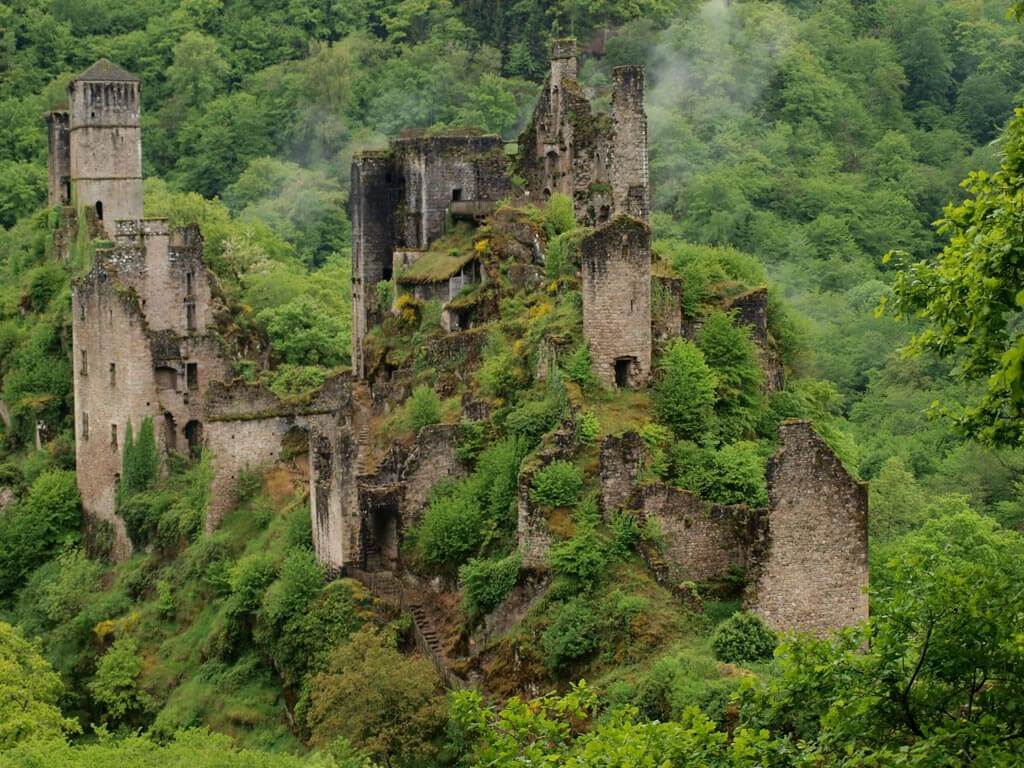
Source: Flickr
- Location: Saint-Geniez-ô-Merle (Nouvelle-Aquitaine)
- Architectural Style: Medieval
This set of crumbling towers located in a steep valley on the western side of Massif Central is just amazing. Tours de Merle was a feudal fortress (castrum) built between the 12th and 15th centuries. It included seven fortified houses owned by seven noblemen from Merles, two chapels, and a village.
The site was taken by the English during the Hundred Years’ War and then by the Calvinists in 1574. The Calvinists established a garrison for two years until the co-lords of Merles chased them out. However, the co-lords then abandoned the site, because they preferred to live in more pleasant and accessible places.
At the end of the 17th century, the village inhabitants, no longer able to count on the lords’ protection, dispersed, and Tours de Merle gradually fell into oblivion.
Today the Tours de Merle are part of a 10-hectare park, and it is an exciting place to explore and enjoy amazing views of Massif Central.
Château de Josselin
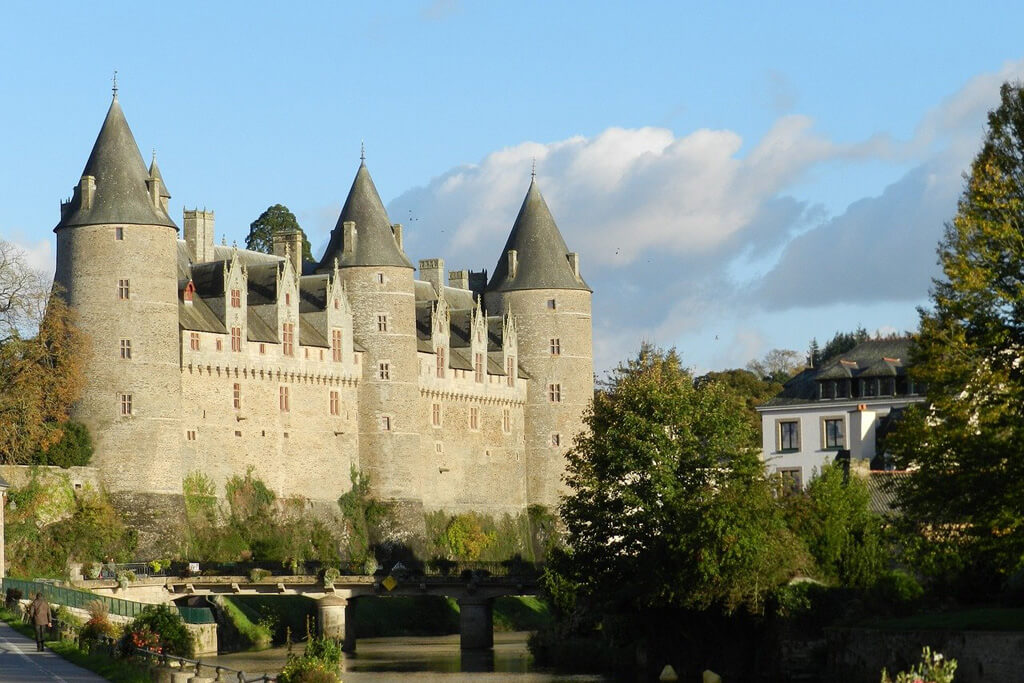
- Location: Josselin (Bretagne)
- Architectural Style: Medieval, Renaissance
The Château de Josselin is an impressive castle located above the Nantes-Brest Canal, in the Gulf of Morbihan. The castle has been home to the Dukes of Rohan for more than ten centuries.
A first wooden château was built in 1008 on this site, chosen for its military and trading importance. Soon a village developed at the foot of the castle.
Over the centuries, the castle was destroyed, reconstructed, and it changed hands many times. The fortress that you can see today from the river is from the 14th century, while the magnificent residence inside, in the Renaissance style, was added in the 16th century.
During the 17th century wars of religion, three of the original nine towers were destroyed on Cardinal Richelieu’s orders, and two more towers were destroyed years later.
One of the best castles in Brittany, Château de Josselin remained abandoned until about 1850 when the dukes undertook a major restoration to become their home again.
Best Castles in Eastern France
The list of best castles in Eastern France includes famous French castles in the regions of Auvergne-Rhône-Alpes, Grand Est, and Bourgogne-Franche-Comté.
Château de Tanlay
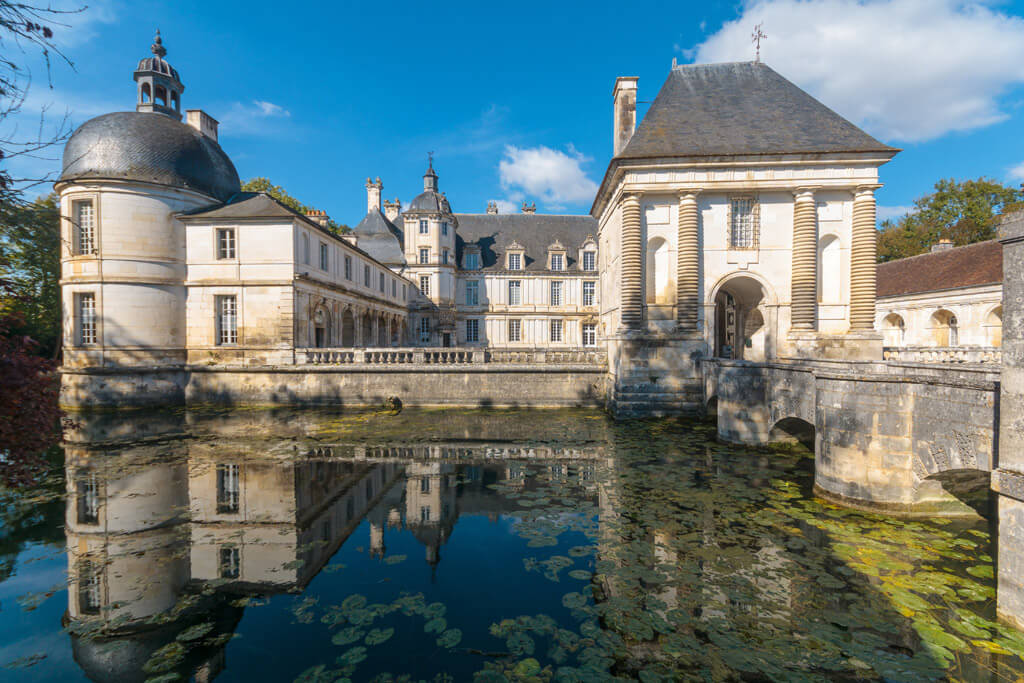
- Location: Tanlay (Bourgogne-Franche-Comté)
- Architectural Style: Renaissance
The Château de Tanlay is a famous château in France built in Renaissance style during the 16th and 17th centuries. It is one of the most beautiful castles in the region of Bourgogne, famous for its unique setting and awesome architecture with slate roofs à la française.
The castle is surrounded by a moat, with access through a bridge. The reflections of the castle on the water and the perfect symmetry of the cour d’honneur is part of Tanlay’s serene charm.
The castle was completely rebuilt by Admiral de Coligny in the 16th century, who inherited the property in ruinous conditions. Home to Admiral Coligny’s family during the Wars of Religion, its reconstruction was completed by Michel Particelli d’Hemery, Mazarin’s superintendent of Finance. In the late 17th century, Château de Tanlay became the property of the Marquis de Tanlay, and the same family still inhabits it.
Château de Ratilly
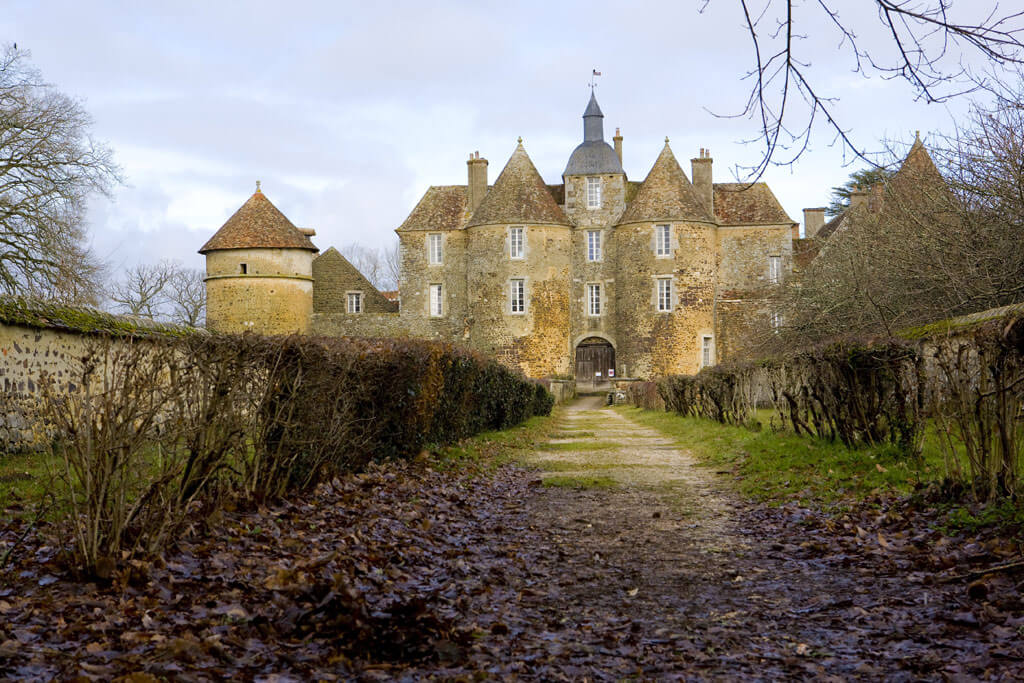
- Location: Treigny (Bourgogne-Franche-Comté)
- Architectural Style: Medieval
This beautiful French château is located on the top of a hill overlooking the Valley of the Tendril at 270 meters. The site is near the Seine-Loire watershed.
The current castle was built in the 13th century following a Philippian plan: an enclosure with 6 turrets delimited a rectangular courtyard. The whole is surrounded by dry moats, with two towers framing the drawbridge.
In the middle of the 14th century, during the Hundred Years’ War, the castle was home to a group of looters. Years later, in 1567, the castle became one of the headquarters for the Huguenots in the Auxerrois.
During the Renaissance, Château de Ratilly was transformed into a habitation for Mary de Puy. The renovation works included installing chimneys and the opening of windows in the walls of the towers, while the southwest tower became a garret.
In the 18th and 19th centuries, the estate was sold several times. Today, the Château de Ratilly is opened to the public as an art center.
Château du Haut-Koenigsbourg
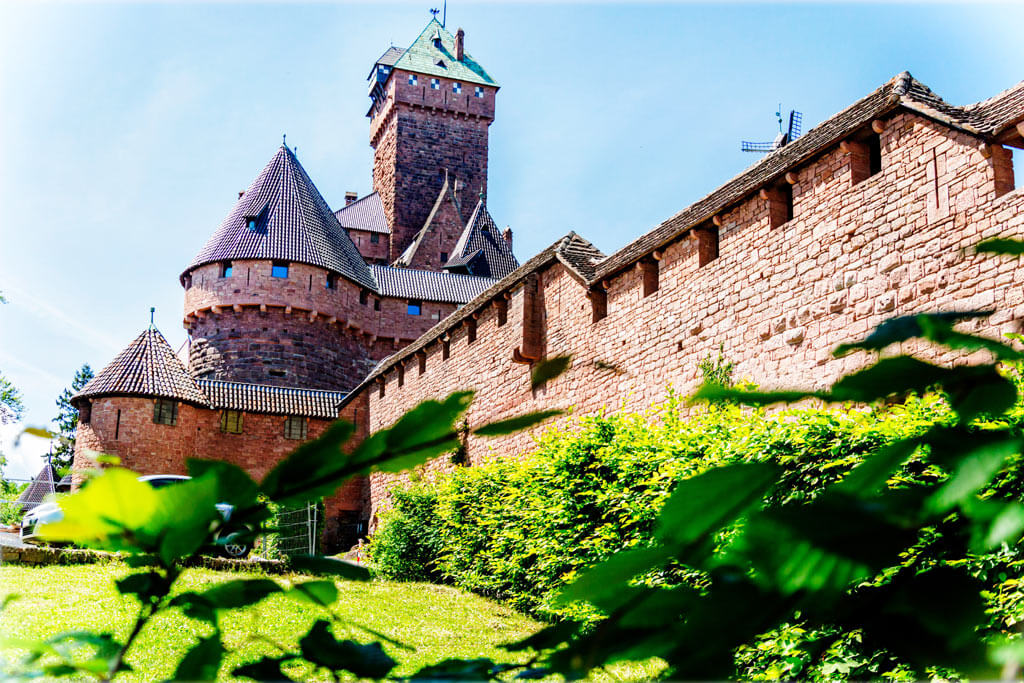
- Location: Orschwiller (Grand Est)
- Architectural Style: Medieval
TIP: This Alsace road trip explores Château du Haut-Koenisbourg and other beautiful places nearby.
Château de Haut-Koenisbourg is one of the best châteaux in France. This fortified castle from the 12th century (but deeply transformed during the 14th century), dominates the Alsatian Plain from the Buntsandstein Rock and has a panorama out to the Black Forest. The castle is a must-stop on any trip to Alsace, and it is a popular day trip from Strasbourg or Sélestat.
The Hohenstaufen family built the castle as part of a defense line to reinforce their power in Alsace. Over the centuries, the castle was disputed by different families and nations until it was severely damaged during the Thirty Years’ War and was abandoned.
The castle we can see today is from the 20th century, the result of Kaiser William II’s romantic vision of medieval castles. The castle went through a deep restoration under his direct supervision, and he visited the works regularly. For the Kaiser, this castle marked the western boundary of the German Empire.
At the end of the First World War in 1919, the region of Alsace-Lorraine and the castle became part of the French State. However, the coat of arms of William II is still visible within the castle, and it remains one of the symbols in Alsace of the German presence between 1871 and 1918.
Château de Val
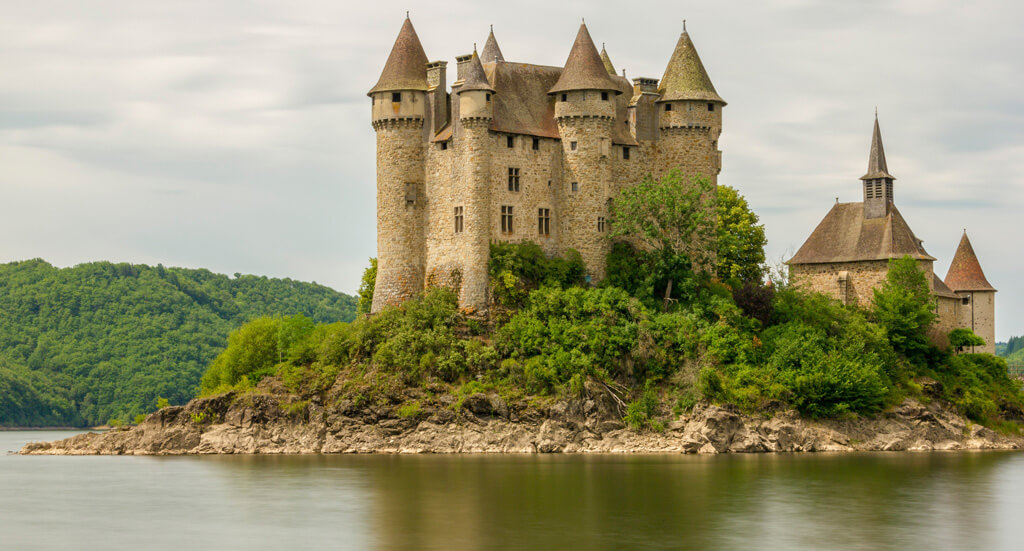
- Location: Lanobre (Auvergne-Rhône-Alpes)
- Architectural Style: Medieval
Château de Val is one of the most charming châteaux to visit in France, a fortified castle located in the region of Auvergne-Rhône-Alpes between the 13th and 15th centuries.
Built on a rocky spur 30 meters high overlooking the Valley of Haute-Dordogne, the fortress, and its parkland failed to disappear under the waters following the construction of the new dam. However, at the very last moment, the water level of the new artificial lake was reviewed only up to the foot of the castle, and Château de Val and the beautiful Saint Blaise Chapel were saved.
Today, Château de Val appears as an atypical construction located on the edge of one of the largest lakes in Europe. Its elegant silhouette crowned with six towers reflected on the water and the natural environment with landscapes of great beauty is a must-see in the region. We recommend staying until nightfall when the Château de Val lights up.
And there you have it, the list of best castles in France to visit, which is the best French château in your opinion?
Click here for more architecture in France
Pin it Now & Read it Later
